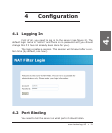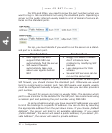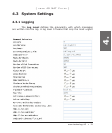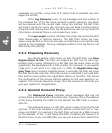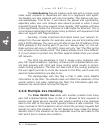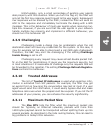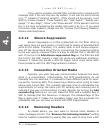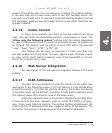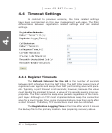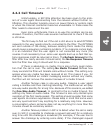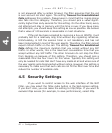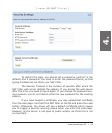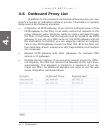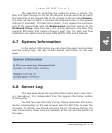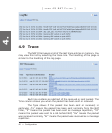
snom technology AG • 39
[ S N O M 4 S N A T F I L T E R ]
packet. This setting does not only help you in making the packets shorter,
it can also help you to keep some parts of the SIP message secret. For
example, you might want to remove P-Asserted-Identity headers from all
SIP messages, because you don’t want others to see which identities you
already checked.
4.3.15 Codec Control
In many environments, you want to exclude codecs from being
used, although both communication partners could agree on them. The
“Allow only the following codecs” setting lists the codecs (separated
by space) that you will allow. If you don’t set anything here, all codecs will
be allowed. The codecs must be written in their SDP name, for example
“ulaw”, “alaw”, “gsm”, “g729”, “g723”, etc.
This feature can be used, for example, to make sure that only
low-rate codecs are being used. The user agents might otherwise agree
on ulaw, which might lead to breaking voice if the bandwidth is not suf
-
ficient for a stream using ulaw.
4.3.16 Web Server Integration
The description of the web server integration follows in the next
chapter.
4.3.17 CLIR Addresses
The SBC has the possibility to hide the identity of the caller (see
description in the following chapter). For this feature it must decide when
to hide the identity. If it hides the identity too early, the further processing
in the data center will be difficult. Therefore it must make a decision when
the request leaves the influence area of the data center.
When the request is sent to a UA that is handled by the NAT Filter,
it does perform this step. However, when it is sent to a PSTN or IP-gate
-
way, it also must hide the identity. The setting Outbound Addresses (for
CLIR) lists the IP addresses that also trigger a hiding of the identity. The
format for this setting is the same as for the trusted IP addresses.
4.



